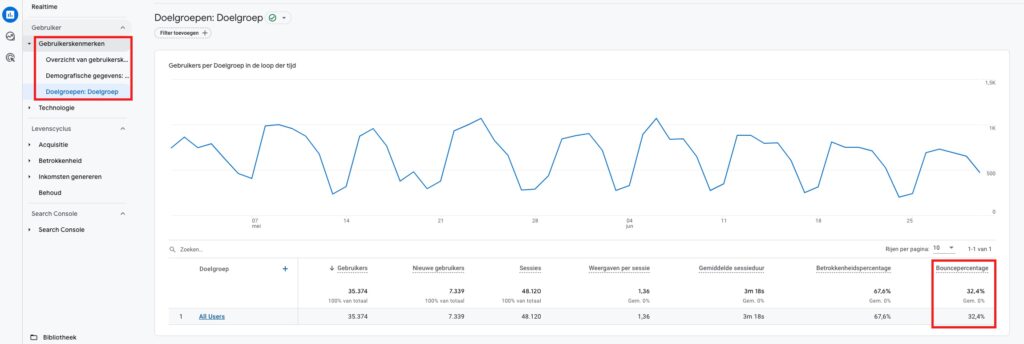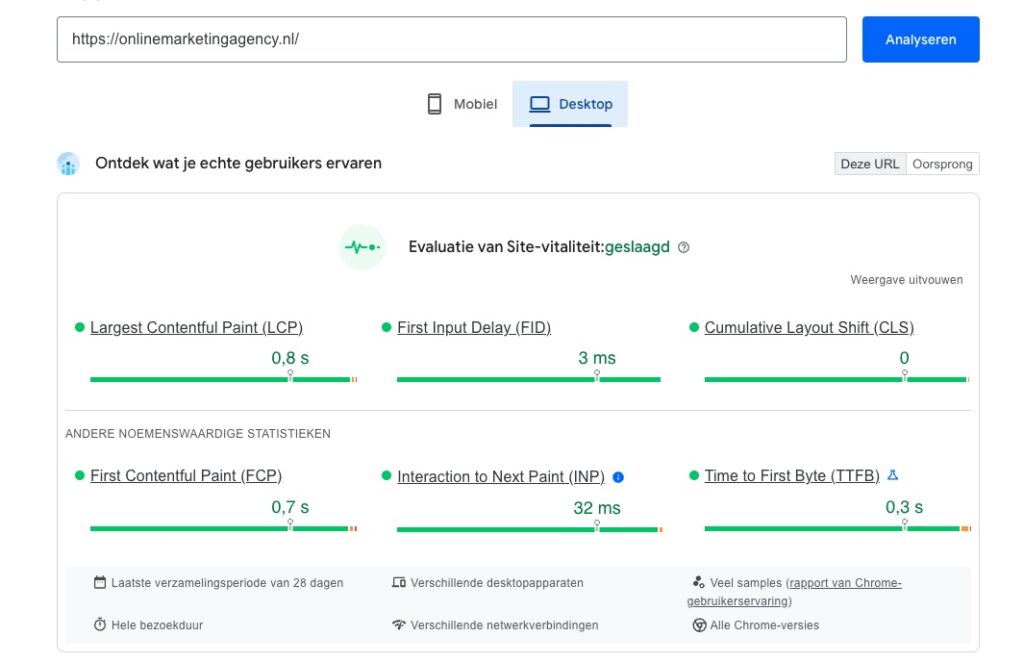Menu
Table of contents
But to make it as easy as possible for you as a novice SEO'er, I have 10 important values and numbers you definitely need to know.
Let's do this.
Organic traffic
The purpose of SEO is to increase the number of visitors to your website by improving the organic findability of your website.
It's not about the number of visitors coming in through ads or social media. Both before, during and after you've been engaged in SEO, it's important to know how many organic visitors your website has or has had.
And finding out the number of visitors is done through Google Analytics.

If your website does not yet have Google Analytics 4, I recommend you read my blog called: In 2 Steps to a Google Analytics counter on your WordPress website.
In Google Analytics 4, under the heading "Acquisition," you will find exactly how many visitors came to your website through Google by looking at organic search, or organic traffic.
Average session duration
Having visitors is not necessarily something that makes you happy. Having the right visitors is.
Because if you only sell skateboards and 99% of your visitors are over 80 years old, then I dare say you are not getting much revenue from your website.
But how do you know what the right visitors are? Those are visitors who click a lot, scroll, make purchases and thus stay on your website for a long time!
And how long on average a visitor stays on your website, we call that the average session duration.
Another important value found in Google Analytics 4.

Bounce rate
But what if people don't visit your Web site at all for a long time? What if people view your website in less than 10 seconds and then leave without interacting or visiting other pages or screens?
Then we speak of a bounce.
The bounce rate is the percentage of sessions that are not sessions with engagement.
So is a high bounce rate necessarily a bad thing?
Definitely not. For example, if you have a blog, your bounce rate may be higher than normal.
That's why I always say: never steer on bounce rate, but steer, for example, on the number of leads you get in.
I'd rather have a 90% bounce rate with 10 leads per month, than a 20% bounce rate with 1 lead per month.
But for some pages, the bounce rate does tell you something. You can also find the bounce rate in Google Analytics 4 and in the following place:

Views per session
Another indicator that you are getting the right visitors to your website is views per session. This gives you insight into how often users view screens or pages during a session on your website or in your app.
It can help analyze user engagement and understand visitor behavior.
Google Analytics 4 calculates this for you by dividing the sum of events from app screens and web pages by the total number of sessions.

Click-through rate (CTR).
Click-through rate, or click rate, indicates the percentage of people who click through on your search results.
Suppose you are #1 on a keyword and suppose 100 people a month search for that keyword.
When 40% click on your search result, you have a CTR of 40%. You can see the CTR of your keywords in Google Search Console.
Check it out!

Tip: Don't have a Google Search Console yet? Then read my blog Create Google Search Console and add your website correctly.
The word click-through rate can also be used within other situations, but generally it refers to the click-through rate of your search results.
For example, consider the number of people who click through on a button within your home page or the number of clicks on your pop-up.
Loading time of your website
Your website's load time is terribly important. You may recognize it yourself.
You click on a website... You wait 7 seconds....
and you click away again.
For the user and also for Google, load time is very important. By now, therefore, load time is an official Google ranking factor.
In other words: long load time = bad(er) ranking. For analyzing your website's load time, I recommend two tools: GT Metrix and PageSpeed Insights.
Both tools not only tell you how fast your website is, but also tell you what's good, what could be better and what's going wrong!

Referring domains
Link building is terribly important and one of the most important parts of SEO.
In addition to having as good a quality of links as possible, it is also important to have enough links. Enough links from enough domains.
Because 100,000 links from 1 domain are not worth that much. And that's why the number of referring domains is very important and a direct indicator of whether you are ranking well.
The more domains, the better you rank. And the higher the quality of that domain, the more likely it is that the quality of your website will also increase as a result in Google's eyes.

Page and domain authority
Determining whether a Web site's link profile is good is tricky when it involves thousands of links. Also, it is always a bit of your own interpretation.
That own interpretation has well-known SEO tools like MOZ, Semrush or Ahrefs as well.
Through a domain authority a page authority these SEO tools tell you how good your link profile is in their opinion. Basically, this is a very useful and important value.
Because when a competitor has a higher authority, it often ranks better within Google.
Please note that because these are numbers from tools and not from Google, you should never blindly rely on them. A high authority does not automatically mean that a website is more findable.

Search volume
The foundation of a good SEO strategy is keywords. Without the right keywords, your blogs/landing pages may just not be found well and generate no visitors.
It is then especially important to know how often a keyword is searched for on average per month.
My favorite tool to find out search volumes of keywords is KWFinder.
With that, you can find out more than enough volumes of keywords per month.
Pro tip: KWFinder is also free to use. Then you can find out the volume of a keyword 5 times a day. Click here to create a free account.
And if you are still unsure how to determine the right keywords, I recommend you read my blog: How to determine the best keywords!
Indexed URLs
Do you wonder why you don't have many visitors to your website? Do you also wonder if you have enough content and how much content your best competitors have?
You can find that out super easily by typing the following into Google:
site:'https://jouwwebsite.nl'
If you do this for your website, you need to replace the URL in the parentheses, including the brackets, with your website. In my case, that would be:
site:https://onlinemarketingagency.com

You will immediately see how many indexed URLs your website has. Do you have 10 indexed URLs?
Get started with content discs! Do you have thousands of indexed URLs but not enough visitors to your website?
Optimize texts.
Good luck!
I told you 10 SEO values you need to know as a beginning SEO'er.
It's up to you to work on this now and apply optimizations to positively impact these numbers.
Good luck and if you have any questions, you know where to find me!
This article was written on May 13, 2019 and updated on November 6, 2023.











Written by: Daniel Kuipers
Daniel is the founder of Online Marketing Agency. He constantly scours the Internet for the latest gadgets and tactics and blogs about them in understandable language. Well, sometimes.